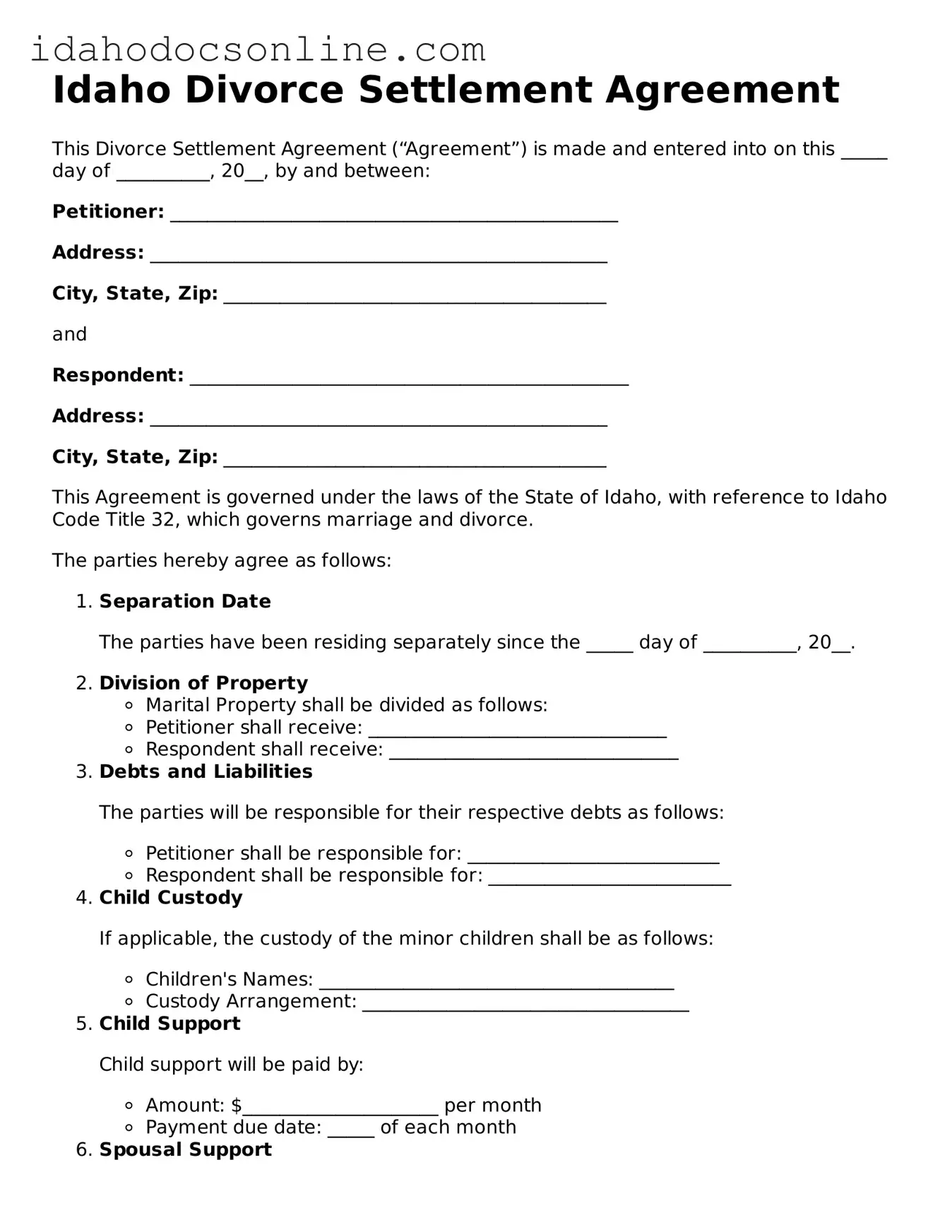Idaho Divorce Settlement Agreement
This Divorce Settlement Agreement (“Agreement”) is made and entered into on this _____ day of __________, 20__, by and between:
Petitioner: ________________________________________________
Address: _________________________________________________
City, State, Zip: _________________________________________
and
Respondent: _______________________________________________
Address: _________________________________________________
City, State, Zip: _________________________________________
This Agreement is governed under the laws of the State of Idaho, with reference to Idaho Code Title 32, which governs marriage and divorce.
The parties hereby agree as follows:
- Separation Date
The parties have been residing separately since the _____ day of __________, 20__.
- Division of Property
- Marital Property shall be divided as follows:
- Petitioner shall receive: ________________________________
- Respondent shall receive: _______________________________
- Debts and Liabilities
The parties will be responsible for their respective debts as follows:
- Petitioner shall be responsible for: ___________________________
- Respondent shall be responsible for: __________________________
- Child Custody
If applicable, the custody of the minor children shall be as follows:
- Children's Names: ______________________________________
- Custody Arrangement: ___________________________________
- Child Support
Child support will be paid by:
- Amount: $_____________________ per month
- Payment due date: _____ of each month
- Spousal Support
Spousal support, if any, shall be paid as follows:
- Amount: $_____________________ per month
- Duration: __________ months
Mutual Release
Both parties hereby release and discharge each other from all claims related to the marriage, except as outlined in this Agreement.
Entire Agreement
This Agreement constitutes the entire understanding between the parties and supersedes all prior discussions and agreements, written or oral, regarding the subject matter herein.
Execution and Finalization
This Agreement shall be signed by both parties and shall become effective upon the filing of an appropriate action for divorce in Idaho.
IN WITNESS WHEREOF, the parties have executed this Agreement on the date first above written.
Petitioner’s Signature: ________________________ Date: _________________
Respondent’s Signature: ______________________ Date: _________________
